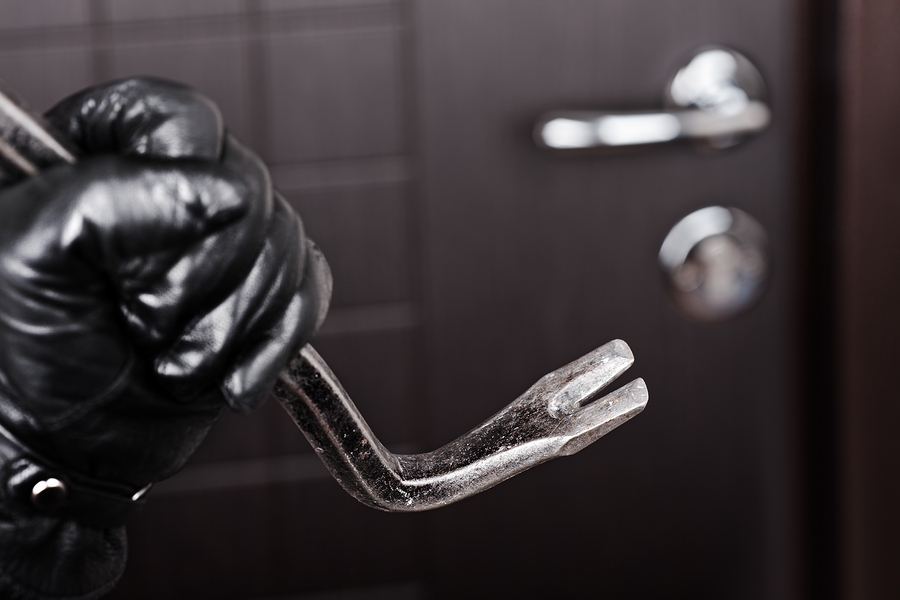Home Invasion Defense Plan – How to survive a home invasion
Do you have a home invasion defense plan?
It’s possibly the hardest thing to plan for because there are so many factors. Three major pieces that have to be accounted for are:
- Family members
- Narrow, confined spaces
- Unknown time of day
- Your position in the house at time of invasion
These four pieces will change rapidly depending on the bottom two factors. However, if we break it down a bit further, there’s usually two major situations where we are at our most vulnerable: returning home and while we’re sleeping. These are the two situations where we’ll always have the tables turned on us. That’s why we’ve included three basic pieces to help solve some of the questions inherent to a home invasion defense plan.
Confirm Friend from Foe – Challenge and Response

Home invasions don’t have a schedule. They can occur in the early morning or late at night. One of the most harrowing ordeals is ensuring you have the right person. For those with young children or elderly family members, the easiest way to confirm is by an answer and call approach. You issue a challenge and they issue a one word response. Does this reveal your position and potentially jeopardize you? Yes. Yes it does. There’s a trade-off between knowing which family members are where in an emergency and the element of surprise.
If you can, always communicate your movements with other members of your household to ensure their survival during home invasion.
Practice: Issuing a challenge and response with other people living in your house. It’s also a good idea to coordinate that challenge and response with an action – such as getting on the ground and/or moving to a more secure area of a room.
Transition Safely from Hallway to Room and Back Again
If you live in a studio bedroom apartment, life just got a whole bunch simpler. However, for those with hallways, adjoining bedrooms with family members in them, and other constraints – the last time to practice for this is during an actual emergency.
Practice: Clearing hallways.
Tool Tip: Consider getting a laser sight for your concealed carry handgun. In a darkened environment, when things get hectic, anything that reduces your time to placing rounds at the exact spot.
Clear and Secure an Area
Even if you discover a burglar or criminal in your home and suppress him successfully – never assume he’s alone. Always check and clear all rooms in a house before letting your guard down. This tip plays in heavily with the challenge and response from the first item. Before placing your pistol back in your concealed carry holster, check each and every room.
The biggest downside is the traditional method that you may see on SWAT or military training videos for clearing a room may not entirely apply. In most situations, the only person you can count on to go into an unknown threat is yourself. That means not doing the classic “stack and push” technique.
Practice: –Dry Fire Exercise– Taking your pistol out and engaging a known target and then securing each room of your home. It also helps to have family members understand what you’re doing and why so they can either become familiar with the process themselves or ideally even assist. Involve your entire family for a weekly or monthly drill, it only takes about 15 minutes and it’s vital that everybody is on the same page and well prepared for a home invasion.
What are some factors you’ve considered in your home invasion defense plan? Do you have any insights? Share them with us in the comments section.
 James England is a former United States Marine Signals Intelligence Operator and defense contractor with over two tours spread over the Al Anbar province and two more operating across Helmand and Baghdis. He is presently a writer focused on Western foreign policy and maintains an avid interest in firearms. A graduate of the University of North Carolina at Wilmington, he presently resides in New Hampshire – the “Live Free or Die” state. He is finishing up his first novel, “American Hubris”, which is set to hit shelves in Fall of 2015.
James England is a former United States Marine Signals Intelligence Operator and defense contractor with over two tours spread over the Al Anbar province and two more operating across Helmand and Baghdis. He is presently a writer focused on Western foreign policy and maintains an avid interest in firearms. A graduate of the University of North Carolina at Wilmington, he presently resides in New Hampshire – the “Live Free or Die” state. He is finishing up his first novel, “American Hubris”, which is set to hit shelves in Fall of 2015.








Pingback: How To Set Up Your AR 15 For Home Defense - Defend and Carry()